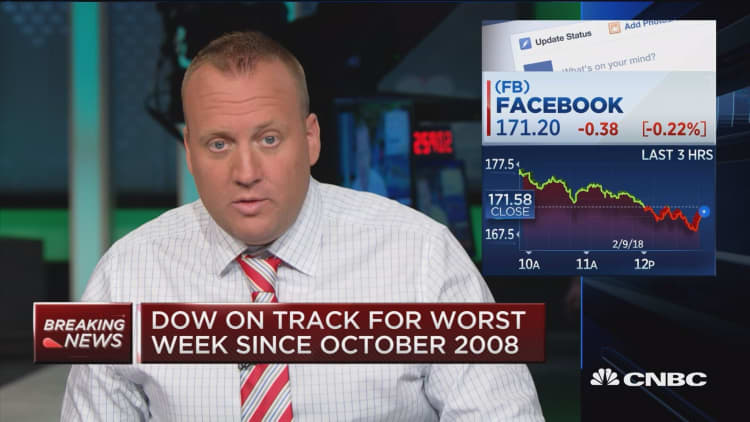
Josh Brown says investors can take advantage of big market declines by using a simple trading strategy.
The fell officially into correction territory on Thursday, down more than 10 percent from its record reached in January.
"One of the things that I do when we get into a situation like this ... I put ludicrously low bids in, in the stocks I either don't own enough of, or I just totally missed out and it always made me upset," Brown said Friday on CNBC's "Halftime Report."
Brown explained that he uses good 'til canceled (GTC) buy limit orders, which aren't executed until the stock hits his preset price.
"So I'm not just randomly flinging in a trade when I feel like it. I will set the number where I want to own it," he said. "And usually I won't get hit, but it makes me start to root for the market to get lower."
The investor said it also keeps him in his other long-term investments.
"It's this weird psychological trick I play. It helps me hold on to the rest of my portfolio and sometimes I steal some stocks," he said.
Brown said this strategy enabled him to buy shares of Netflix and Facebook in 2015 at great entry points.
"Google [referring to Alphabet] is a name I would do this with [today]," he said.
Read here for Josh Brown's full blog post on the strategy
Brown is CEO of Ritholtz Wealth Management, a New York City-based investment advisory firm. He is also a CNBC contributor.
WATCH: Five strategies you should use to protect your portfolio



